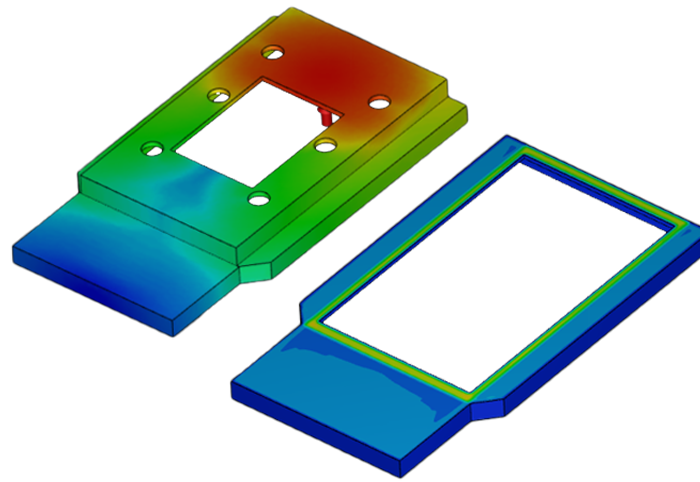
Physical foaming - reducing part weight and production costs
ESPAECIALLY FOR OUR USERSDo you need conclusive criteria that enable you to assess and better optimize the molded part quality of complex injection molded parts mechanically as well as optically in order to reduce part weight, manufacturing problems and production costs? Then let us give you a hint how physical foaming and the analysis of Moldex3D simulations can support you in achieving those goals.
During the injection foaming process pores are formed by a homogeneous mixture of a physical blowing agent (e.g. N2 or CO2) and the polymer melt. The pores are formed when the pressure drops between the plasticizing unit and the mold. At that stage the blowing agent changes from the supercritical phase into the gas phase. The size of the pores is influenced by the internal pressure in the mold. The extended model of Han and Yoo allows a much more exact prediction of the pore size via the pressure curve in the mold.
In particular, it is possible to model the reduction of the pore size with increasing packing pressure more accurately. The pores are thus not eliminated with increasing pressure (pore size =0), as in the previous used model by Han and Yoo. This model adjustment is particularly important when using the core-back process, since a high packing pressure and pore shrinkage is generated in order to achieve a more homogeneous component structure when the pressure drops again.
In the new MOLDEX3D 2021, microcellular foaming of plastics simulation is available. Meaningful information about surface structure, bubble growth and bubble sizes can be analyzed thanks. The basic preparation of this simulation in Moldex3D is identical to the classic process simulation (component, sprue, mould, temperature control, ...). Only the foaming module is chosen for the simulation. The simulations can be performed with Moldex3D eDesign as well as BLM mesh (Boundary-Layer-Mesh). The selection of the material and the basic process parameters are supplemented exclusively by parameters of the gas. The influence of temperature and pressure fluctuations in the cavity can be analyzed. Additional process variables, such as filling and foaming time, gas concentration and filled cavity volume at the switchover point and the duration of the foaming reaction can be optimized. In the computation parameters, the gas type and equation related to the needed model for bubble formation can be selected for the foam calculation.
Of course, in addition to the usual results, further foam-specific results such as cell density, cell size distribution, density distribution, etc. are available after the calculation and will help to perform the right analyses and take the needed decisions to achieve the targeted requirements.
We look forward to your feedback and are more than happy to help you with any further questions.
